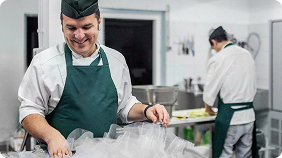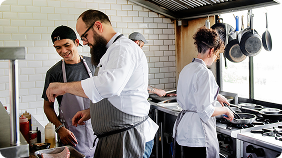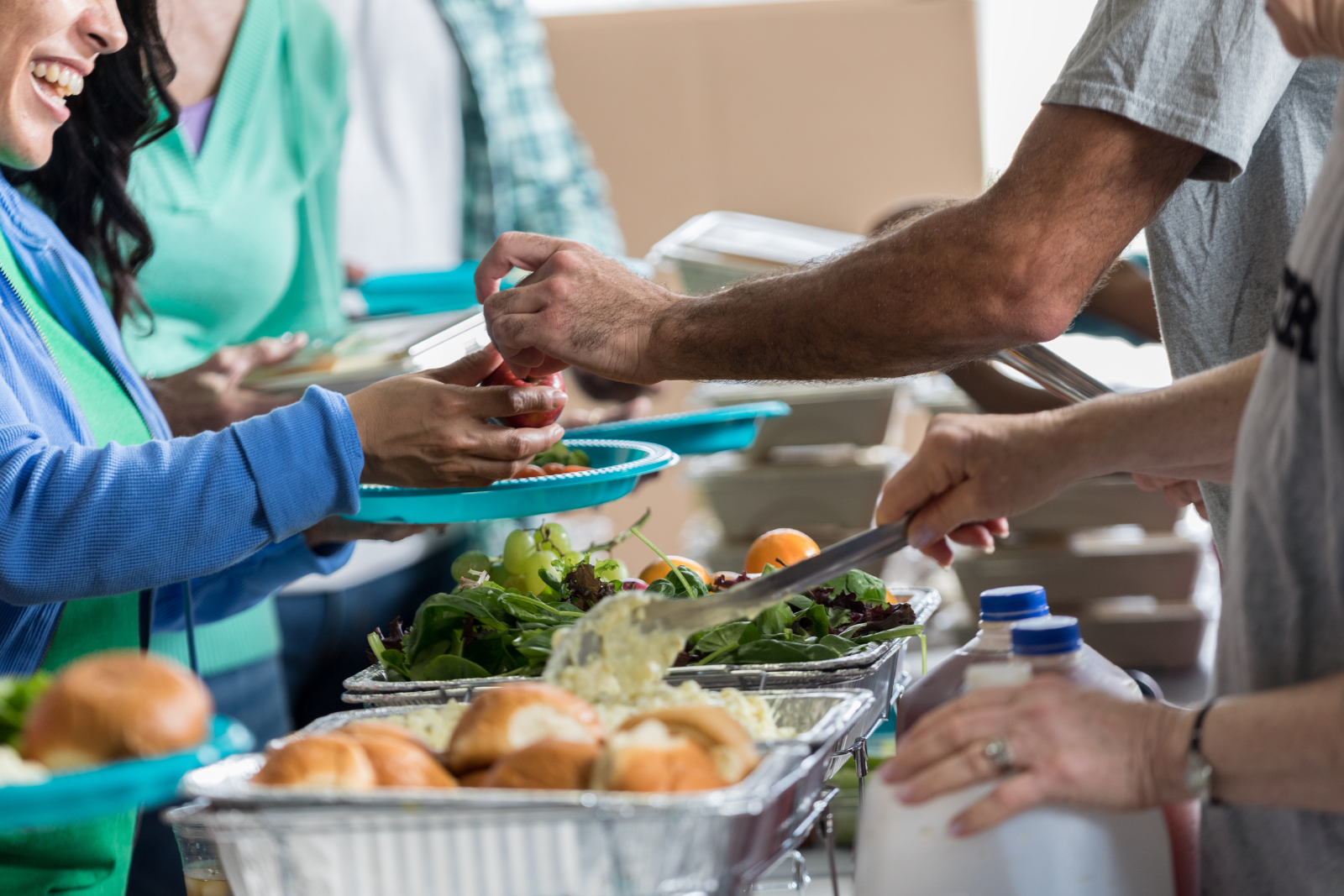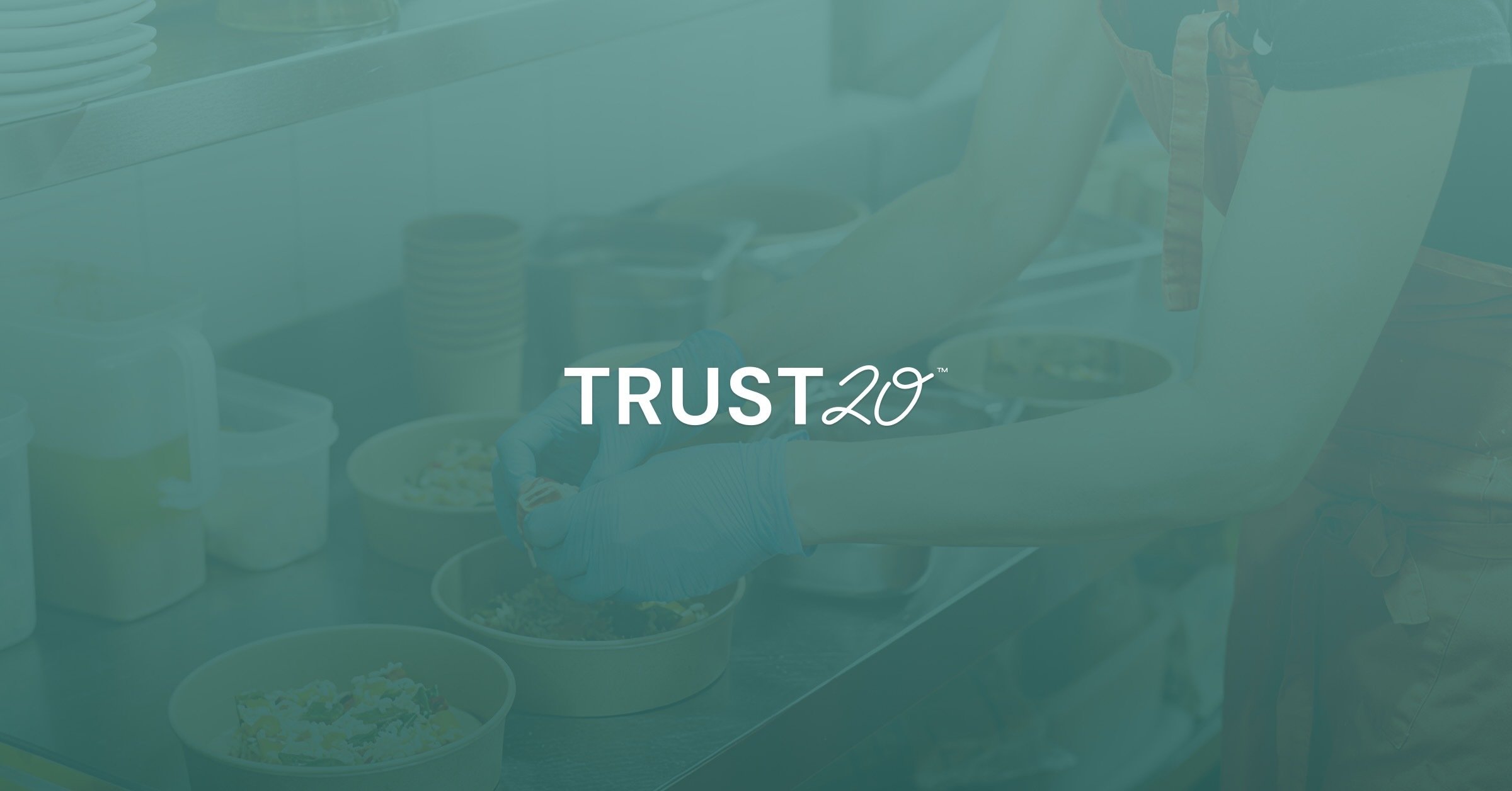The Saturday morning breakfast shift at the diner I worked at between undergraduate and graduate school was the most energizing environment I’ve ever worked in. It was one of the most difficult and rewarding jobs I’ve had – my feet have never been so sore, but I truly enjoyed each moment. Today, and every day, I am in awe of the work ethic and dedication of operators and staff across the food industry.
Serving at a restaurant was the first time my actions directly changed someone’s experience – whether it was changing the flow of tickets in the kitchen or how the dining room was set up, I was thinking about what would make it better for customers to be in the restaurant. This kind of problem-solving set me up for success through years of consulting with finance, retail, and non-profit organizations. Ultimately it has led me to Trust20 – I am intensely passionate about solving problems in the industry where I started.
As I look towards the future of Trust20, I believe our services are more relevant than ever. The last year made every business take a hard look at their operations and how they handled the health and safety of their diners and employees. In some ways, the food industry is unrecognizable. Even as we approach this idea of a new “normal,” we have so much to learn.
Consumers may be starting to see the light at the end of the tunnel and getting more comfortable with the idea of activities outside of their homes, but their understanding of safety has fundamentally changed. While they are hopeful, I believe many are still expecting extensive safety precautions wherever they go.
These consumers have a pent up demand to go out, but also want to ensure they are spending their hard-earned dollars at businesses who not only respect their comfort and safety, but their staff’s as well. I myself am looking forward to returning to the experience of dining with a small group of friends with the buzz of socialization and music – but I’ll have my eye on how restaurants are executing their safety measures and choose where I go accordingly.
If the last year has taught us anything, the food industry needs to continue trying new things. The agility of operators has kept restaurants, bakeries, and beyond alive and ultimately that creativity will lead to renewed growth and strength in the industry.
Just experiment even if you think it might not work for your restaurant. It could be the new secret sauce for your business! We all know nothing happens overnight so give it time for your staff, diners, and yourself to adopt the newness. Most importantly, if it doesn’t end up working out, celebrate it! You tried, learned, and were able to stop before the cost was too high. No what-ifs or regrets.
The definition of safety itself has changed and will continue to change. Meeting consumer expectations has become a moving target, therefore maintaining a mindset of continuous evolution will not only serve the industry’s bottom line but also the well-being of our communities. I am committed to cultivating a network of businesses who proudly declare their commitment to creating safe, healthy, and welcome spaces. I firmly believe not saying anything is saying something on its own; it is critical for businesses to be transparent with their consumers in order to succeed.
Trust20 is expanding its suite of products and services and I am excited to work closely with restaurant industry professionals – from operators to servers and beyond. The industry is full of motivation, passion, and energy and I look forward to partnering with restaurants and industry workers to help them thrive.






.png)

.png)
